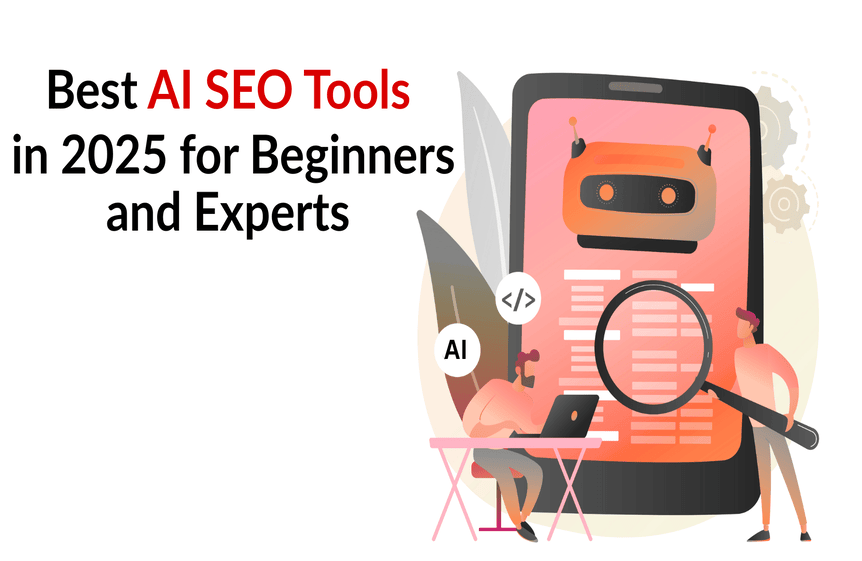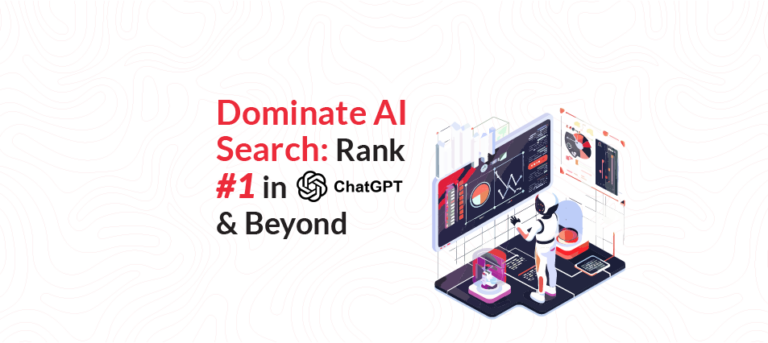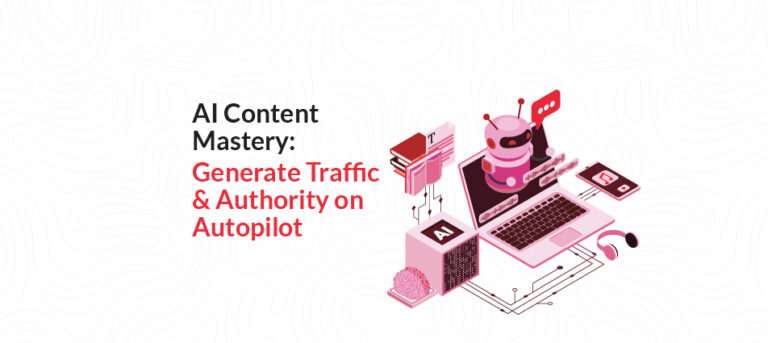Best AI SEO Tools in 2025 for Beginners and Experts
Search is changing fast. Results now appear as classic blue links, rich snippets, and AI-generated summaries. For businesses, that means your brand must be discoverable across all these surfaces—and show up when assistants (ChatGPT, Copilot, Gemini, Perplexity) cite sources. That’s where AI SEO tools prove their value in 2025. They compress research time, surface insights you’d miss by hand, and help you publish people-first pages that earn visibility in both search and AI overviews. Importantly, Google’s guidance is clear: automation is fine if the content is helpful and for people, not just bots. At the same time, AI summaries are continually evolving, so workflows must adapt through smart monitoring, audits, and editorial standards. This guide distills what matters now—so beginners can start confidently and experts can scale without losing quality. We’ll cover the categories that move the needle (keyword research, content optimisation, seo audits, and outreach), compare leading options by use-case, and finish with a simple buying checklist and FAQs. You’ll also see anchor ideas for internal links (e.g., off page seo, ecommerce seo, free seo tools, Google’s content update) to support your broader strategy.
Understanding AI SEO Tools
AI-driven platforms analyse SERPs, cluster keywords by intent, generate or grade content, watch your site 24/7, and automate parts of digital PR. Used well, they reduce toil and surface patterns you can act on, while you stay accountable for accuracy, originality, and trust. Google’s “helpful content” guidance still applies—tools assist; editors and SMEs ensure E-E-A-T.
Key Benefits of Using AI SEO Tools
If you’ve been searching for ai tools for seo, here’s what to expect:
- Speed & focus: Turn huge keyword lists into tight clusters and briefs you can actually ship.
- On-page quality: Drafts and optimisation tips align with what’s winning now, not last year.
- Always-on monitoring: Real-time alerts catch technical and content changes before rankings suffer.
- Outreach at scale: AI helps find prospects, personalise emails, and track replies—without sounding robotic.
Top AI SEO Tools for Keyword Research
Keyword research shifted from single phrases to intent clusters and AI-search visibility. The goal now is to group queries, map intent, and brief writers fast—then learn which topics AI assistants actually cite.
Tool 1 – Semrush Copilot
What is it? An AI assistant inside Semrush projects that reads your data and suggests prioritised actions (opportunities, alerts, next steps).
- AI-powered recommendations and notifications inside your dashboard
- Helps prioritise topics and fixes across Semrush reports
- Useful for teams that need quick, high-signal summaries before deep dives
Tool 2 – Keyword Insights (Clustering & Briefs)
Why use it? It clusters keywords using live SERPs, then generates AI-assisted briefs to cover a topic fully—ideal when you inherit messy keyword lists.
- SERP-based clustering to reflect how Google actually groups intent.
- AI-driven briefs and writing support to speed production
- Handy when you must turn thousands of terms into 10–20 great pages
Tool 3 – Surfer (Research + SERP Analyzer)
Why use it? A practical suite for research and SERP analysis that integrates AI to make suggestions more actionable for writers and editors.
- Keyword research, SERP patterns, and domain planning in one place
- Content editor guidance draws from competitive pages.
- Good balance of depth and usability for lean teams
Best AI SEO Tools for Content Optimization
On-page seo wins now come from matching searcher intent, covering entities thoroughly, and writing clearly. The top ai seo tools in this bucket translate SERP signals into concrete changes writers can apply.
Tool 1 – Surfer (Content Editor)
Why use it? Gives writers an AI-augmented checklist—terms, headings, and structure—plus an editor that nudges toward parity with leaders on the SERP.
- Practical guidance during drafting
- Bridges strategy and execution for non-experts
- Strong fit for content operations with many contributors
Tool 2 – MarketMuse (Strategy & Briefing)
Why use it? Uses AI to find topical gaps and generate outlines/briefs that raise breadth and depth—great for long-form hubs and pillars.
- Gap analysis across clusters
- AI-assisted briefs with suggested sections
- Helpful when you need a “source-of-truth” brief per page
Tool 3 – Phrase (SERP-informed Drafting)
Why use it: Combines SERP research with AI drafting and content scoring, so editors can iterate quickly while keeping pages tightly aligned to intent.
- SERP digest + AI draft starter in one workspace
- Content scoring to guide iterative improvements
- Ideal for smaller teams shipping faster
Top AI SEO Tools for SEO Audit
Intro (what changes): Technical health is a moving target—deploys, CMS edits, and template tweaks cause regressions. AI-assisted monitoring and alerts shorten the time between “something broke” and “fixed”.
Tool 1 – Conductor (ContentKing) Real-Time Monitoring
Why use it? Always-on crawlers track site changes and SEO issues 24/7, sending alerts when something drifts—perfect for high-velocity sites.
- 24/7 Monitoring™ and real-time change tracking
- Actionable insights and tasks from many signals
- Integrations and alerts where your team works
Tool 2 – Semrush Copilot + Site Audit
Why use it? Pair Copilot’s AI recommendations with Site Audit to bubble up issues and prioritise fixes, from crawlability to CWV-adjacent checks.
- AI-powered notifications across your project
- Practical next-step suggestions for non-specialists
- Helpful for agencies responsible for lots of properties
AI Tools for SEO Link Building and Outreach
Outreach is still human, but AI can handle prospecting, list-building, and personalised drafts. The goal is relevance at scale—without sounding canned.
Tool 1 – Pitchbox (AI Personalization)
Why use it? Pitchbox pairs prospecting with AI that drafts on-brand emails, suggests replies, and keeps your tone consistent—so you move faster without sounding generic.
- AI personalisation & template coach: Turn a brief and a few fields (site, topic, angle) into first-draft emails that match your brand voice.
- Built-in reply help: Summarises inbound responses and proposes next steps (nudge, escalate, or close).
- Keyword & prospecting helpers: Map targets from SERPs and align anchors with your campaign themes.
- Proven at scale: Roles/approvals, sequences, deduping, and reporting for high-volume link-building.
Pro tip: Lock your voice with a reusable template “spine” (hook → value → proof → soft CTA), then let AI vary the opening line per prospect.
Tool 2 – BuzzStream (ListIQ + PR Workflows)
Why use it? BuzzStream acts like a PR-ready outreach CRM. ListIQ pulls journalists and outlets straight from news results, so you can jump from story idea to targeted media list in minutes—then run classic backlink outreach alongside digital PR.
- ListIQ media lists: Auto-build and enrich contact lists from news queries; dedupe and segment fast.
- PR-friendly workflows: Keep everything in one place—pitches, embargo dates, and outlet status (pitched / interested / under embargo / published). Add notes, quotes, images, and links so the whole team works from the same source of truth.
- Relationship memory: See who opened, replied, or linked before, what angle landed, and when you last followed up—so every new pitch starts smarter.
- Outreach + links, together: Run digital PR and classic backlink outreach from the same pipeline—one list, one schedule, unified reporting.
Pro tip: Write a punchy one-line news hook, generate a ListIQ draft from a focused query, then hand-check your top outlets. Personalize the first two lines to each journalist’s recent article (headline + takeaway) before you hit send.
Tool 3 – Respona (All-in-one Outreach)
Why use it? Streamlines discovery, templates, scheduling, and tracking—plus education around AI-assisted link building and guest posting.
- Campaigns, prospecting, and automation in one
- Guides and examples for AI-assisted outreach
- Good middle ground for small teams growing fast
How to Choose the Best SEO AI Tools for Your Business
Factors to Consider
- Jobs to be done: Do you need clustering and briefs, on-page scoring, audits/alerts, or outreach? Map your bottlenecks first.
- Team skill and time: Tools that require heavy setup may stall adoption. Prioritise ones that surface clear next actions.
- Data freshness: Prefer platforms that pull live SERPs and continuously monitor sites.
- Governance: Maintain “people-first” standards for who wrote the content, sources used, and SME review.
- Stack fit: Shortlist integrations you’ll really use (GSC, GA4, Sheets, your CRM or PR stack).
AI SEO Tools Comparison: Pricing, Features, and Best Use Cases
Below is a quick side-by-side to help you match tools to problems (use this as your internal link hub to categories like free seo tools or off page seo later):
*Indicative only—confirm current pricing on vendor sites.
When you compare seo ai tools, focus less on feature counts and more on how fast they move a page from idea → brief → publish → cited/linked.
Future of AI Tools for SEO in 2025 and Beyond
Three trends to plan for now:
- AI visibility becomes trackable. Suites are beginning to report on citations and traffic from AI assistants, not just web referrals—expect this to become standard.
- AI-native processes beat manual speed. The winners treat AI as scaffolding for strategy, ops, and reporting—not a bolt-on toy.
- Policy and formats keep shifting. AI summaries will tighten criteria after high-profile mishaps; your best hedge is helpful, well-sourced content and strong brands. Consider an internal explainer for stakeholders on Google’s content update.
There is no single best seo ai tools choice—stack the right ones for your workflows and budget, then review quarterly.
Conclusion
Beginner or expert, your playbook is the same: pick a small stack that removes the biggest bottleneck (clustering, briefs, optimisation, monitoring, or outreach) and hold the line on people-first standards. Use your analytics to learn which formats get cited or linked, double down on what works, and phase in more automation only when it speeds quality. Keep internal anchors ready to build topic depth (ecommerce seo, off page seo, free seo tools), and update your team’s SOPs after each Google’s content update.
FAQs
Can SEO be done using AI tools?
Yes—tools can cluster keywords, draft briefs, suggest on-page improvements, monitor changes, and assist outreach. But you still need subject-matter input, sources, and editorial judgment to stay people-first per Google’s guidance.
Are AI SEO tools replacing traditional SEO practices?
No. They accelerate the same fundamentals: crawlability, intent-matched content, internal links, and authority via mentions/links. The biggest shift is where visibility happens—classic SERPs and AI summaries—so audits and PR matter even more.
What is the best AI tool for increasing visibility?
It depends on the bottleneck. For research/briefs, try Keyword Insights; for on-page, Surfer or MarketMuse; for monitoring, Conductor (ContentKing); for outreach, Pitchbox/BuzzStream/Responsa. Pick one per job, then expand on it.











